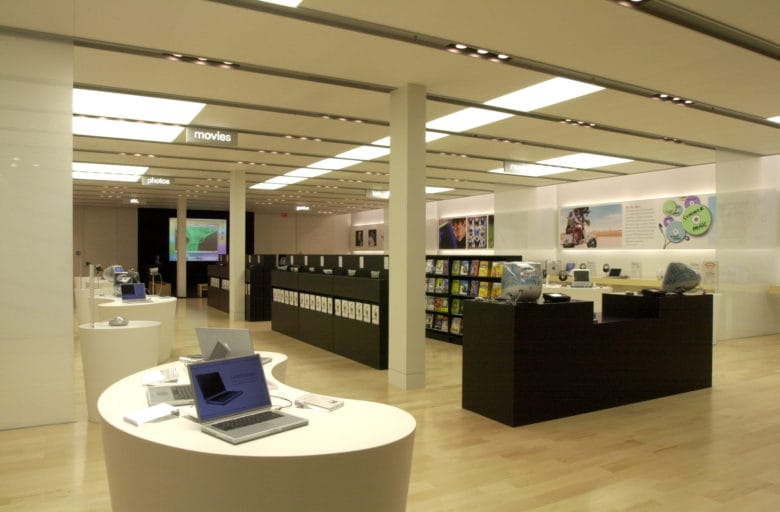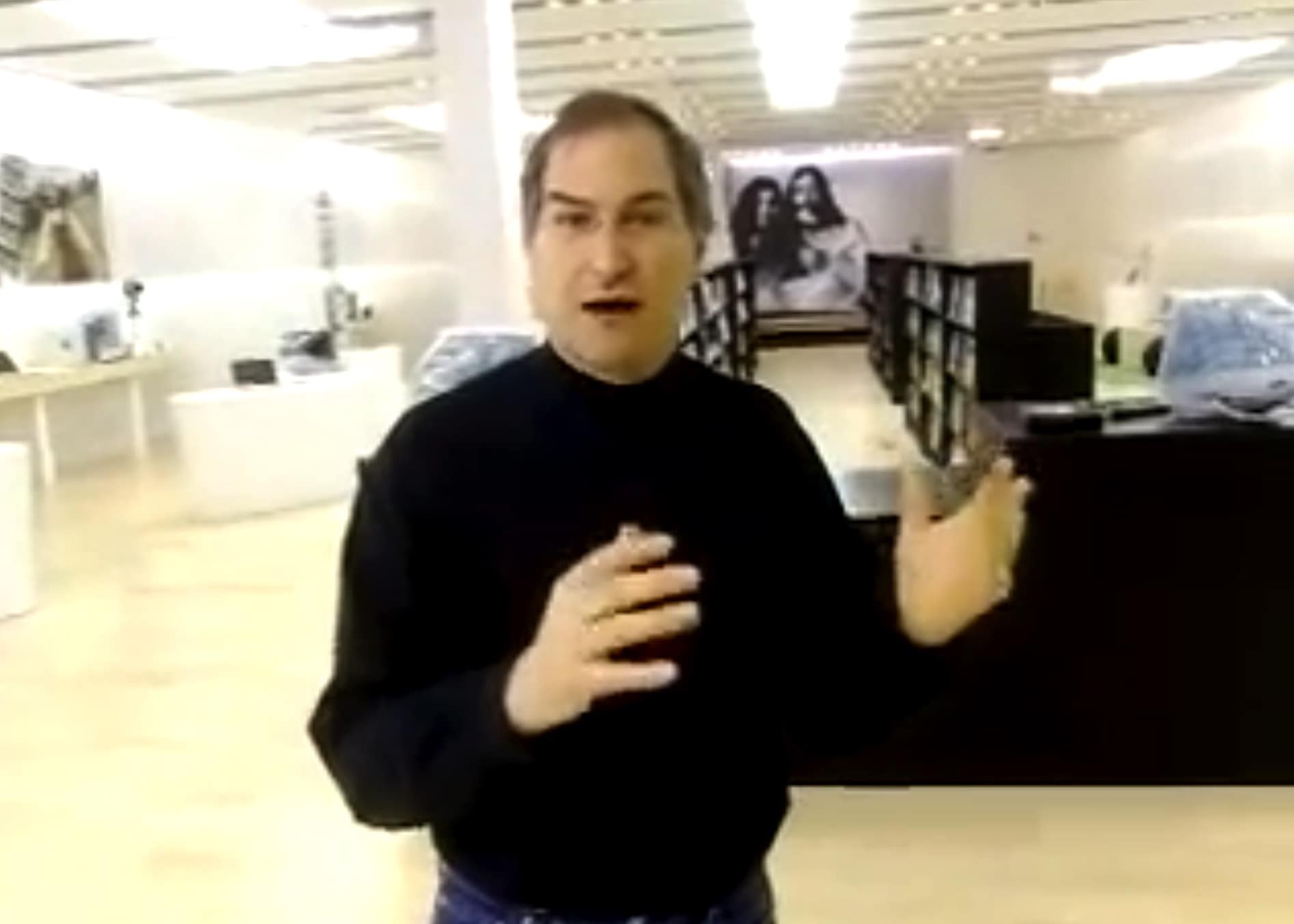 May 15, 2001: Steve Jobs flips the script on the dreadful experience of computer shopping, unveiling an ambitious plan to open 25 innovative Apple stores across the United States.
May 15, 2001: Steve Jobs flips the script on the dreadful experience of computer shopping, unveiling an ambitious plan to open 25 innovative Apple stores across the United States.
The first two Apple stores, located at Tysons Corner in McLean, Virginia, and the Glendale Galleria in Glendale, California, are set to open later that week. But this new Apple initiative is about much more than just a couple of retail outlets. It’s a radical reinvention of tech retail that will change the way computers get sold.
Apple stores think different about retail
Long viewed as an upstart indie in the computer industry, Apple always tried to “think different” about retail. During the 1980s and ’90s, as Windows PCs became the norm, Cupertino continually tried to find ways to improve the retail experience.
Not too much happened until Jobs returned to Apple in 1996. Within his first year back, he laid out two initiatives: setting up Apple’s online store, and establishing a string of outposts inside CompUSA shops around the United States.
The CompUSA experiment served as a prototype for the Apple retail stores that would follow. Inside a dedicated section of each CompUSA store, Apple-trained employees helped customers connect with Cupertino’s products.
This “store within a store” concept gave Apple much more control than prior approaches. Apple could dictate the way its products got displayed and demoed to consumers. Unfortunately, the Apple-CompUSA deal was not a match made in heaven. The mini Apple stores drew disappointing foot traffic. (At least part of the problem was that they were often positioned near the back of the CompUSA outlets.)
Shopping that ‘just works’
When it came to retail, Jobs preferred high-end outlets that focused on “big ticket” items rather than bulk sales.
This is exactly what the stand-alone Apple stores turned out to be when they debuted in 2001. With a newfound focus on sleek design — especially visible in the likes of the iMac G3 and iBook — Apple products looked especially exotic compared to the putty-colored plastic cases seen in typical computer stores.
In fact, many retail stores sold their own generic PCs at the time. These in-house models offered higher profit margins than buying and selling other people’s computers. Because of that, these stores had a vested interest in steering potential customers away from Macs.
The Apple stores gave Cupertino an opportunity to apply its design-focused, “it just works” ethos to the retail experience.
Compared to the way other computer stores packed products in, Apple stores seemed more in line with high-end fashion boutiques. They showed off just a few choice products to tantalize customers.
Designing the perfect Apple store experience

Photo: Apple via MacStories
Jobs worked closely with Ron Jonhson, former vice president of merchandising at Target, to design the perfect user experience for Apple stores. They came up with concepts like the Genius Bar and a product demo theater. They even offered internet-connected computers so customers could just hang out and check email or their favorite websites.
“The Apple stores offer an amazing new way to buy a computer,” Jobs said in a press release announcing the plan to open more than two dozen retail outlets. “Rather than just hear about megahertz and megabytes, customers can now learn and experience the things they can actually do with a computer, like make movies, burn custom music CDs, and publish their digital photos on a personal website.”
It was a total reimagining of what a computer store could, and should, be. Since then, everyone from Samsung to Microsoft copied the formula — although nobody pulled it off like Apple.
Customers had to wait a few more years before Apple started opening its most iconic retail outlets, like the Fifth Avenue store in New York. However, May 2001 is when the Apple store experiment kicked off in style.
Today, you can take virtual tours of the Tysons Corner and Fifth Avenue locations with the Apple Store Time Machine app.


